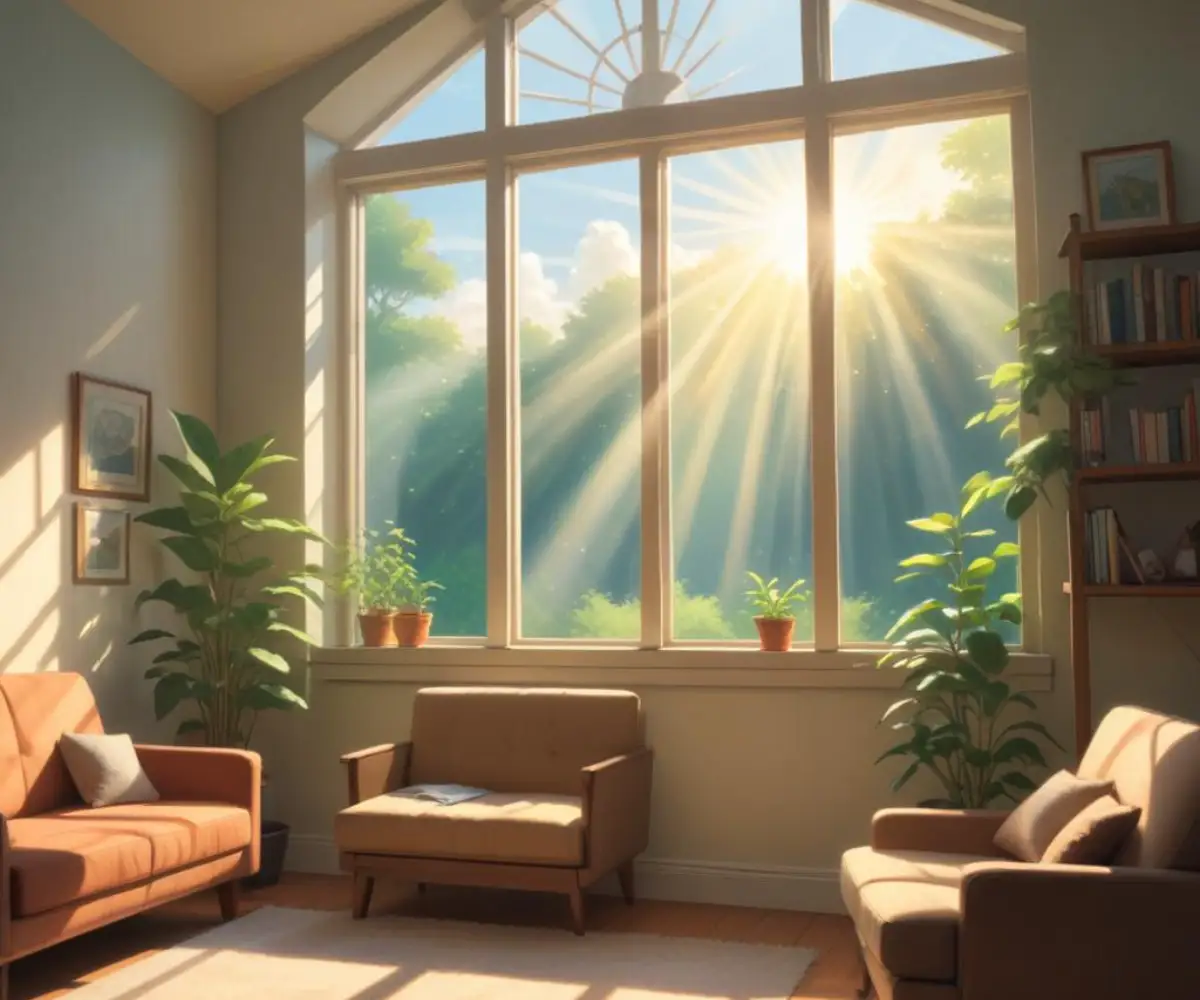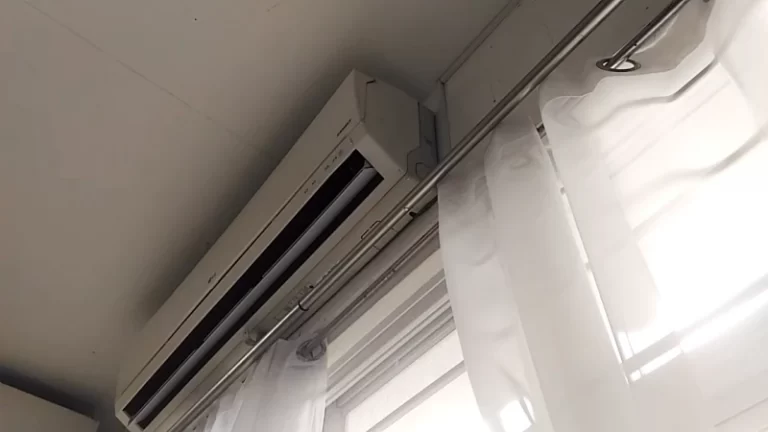Odorless Haze in Your House? Here’s What It Is (and How to Fix It)
You see it when the sunlight streams through the window—a strange, shimmering haze hanging in the air. You try to sniff it out, but there’s no smell of smoke, chemicals, or anything else you can identify. It’s an odorless haze in your house, and it can be unsettling.
This mysterious indoor fog is a common concern for many homeowners. Without a clear cause, it’s natural to worry about your home’s air quality and what you might be breathing in. Fortunately, you can almost always identify and solve the problem with a little investigation.
This guide will walk you through the most common culprits behind that odorless haze, from invisible chemical compounds to microscopic mineral dust, and give you a clear, actionable plan to restore fresh, clean air to your home.
You'll Learn About
Decoding the Haze: The Most Common Sources
Before you can clear the air, you need to understand where the haze is coming from. Most of the time, the source is one of three common household issues: off-gassing chemicals, mineral dust from a humidifier, or problems within your HVAC system.
VOCs: The Invisible Off-Gassing Culprit
One of the most frequent causes of an indoor haze is Volatile Organic Compounds (VOCs). These are chemicals that are released as gases from various products in your home. While many VOCs have a distinct smell, some are nearly odorless and can create a visible haze under certain lighting conditions.
Sources of VOCs are everywhere in a modern home. They can be released from new furniture, carpeting, vinyl flooring, and even memory foam mattresses. Paints, primers, and sealants are also significant contributors; even after they’re dry, they can continue to off-gas for months. For instance, when tackling a new painting project, understanding product specifics, like in these sherwin-williams-extreme-bond-primer-reviews_gem1, can help you choose lower-VOC options to minimize indoor air pollution from the start.
Mineral Dust from Humidifiers: The “White Dust” Phenomenon
If you use an ultrasonic or impeller humidifier, you may have found the source of your haze. These types of humidifiers work by vibrating or rotating to create a fine mist. If you fill them with regular tap water, which contains minerals like calcium and magnesium, the humidifier will disperse these minerals into the air along with the water vapor.
This results in a fine, white, powdery dust that can hang in the air, creating a noticeable haze. This “white dust” eventually settles on surfaces, especially dark furniture, where it becomes highly visible. While generally not considered a serious health risk, it can be a nuisance and may aggravate respiratory issues for sensitive individuals.
HVAC System Issues: Your Air’s Superhighway
Your heating, ventilation, and air conditioning (HVAC) system is designed to circulate air throughout your home, but if not properly maintained, it can become a source of airborne particles. A dirty or clogged air filter is a primary offender. When the filter is full, it can no longer effectively trap dust, dander, and other particulates, allowing them to be blown back into your living spaces.
Leaky ductwork can also create a hazy environment. If your ducts have gaps or cracks, they can pull in dust from your attic, crawlspace, or basement and distribute it throughout your house. This can be a particular concern in older homes, which may have aging duct systems or other structural quirks. Understanding the common problems-with-houses-built-in-1980s_gem1 can provide context for potential air quality issues related to construction and materials from that era.
When the Haze Signals a Deeper Problem
While the causes above are the most common, sometimes an odorless haze can point to more serious underlying issues that require immediate attention. These are less frequent but important to rule out for the health and safety of your home.
High Particulate Matter (PM2.5): The Unseen Danger
The haze you see could be comprised of fine particulate matter, known as PM2.5. These are microscopic particles less than 2.5 micrometers in diameter that can be inhaled deep into the lungs and even enter the bloodstream, potentially causing serious health problems. Sources of PM2.5 can include outdoor pollution seeping indoors, smoke from cooking or burning candles, and fireplace use.
Because these particles are so small, they can remain suspended in the air for long periods, creating a persistent haze. Exposure can lead to irritation of the eyes, nose, and throat, and may worsen conditions like asthma and heart disease.

Humidity and Condensation: A Breeding Ground for Problems
High indoor humidity can contribute to a hazy appearance in the air. When the air is saturated with moisture, water vapor can condense around airborne dust and other particles, making them larger and more visible. This often feels like a stuffy or stagnant atmosphere.
More importantly, excessive humidity creates the perfect environment for mold and mildew to grow. While mold spores themselves don’t typically form a visible haze, the conditions that cause the haze—high moisture and poor ventilation—are also a breeding ground for mold, which can release harmful toxins into the air.
Construction Dust and Renovation Debris
If you’ve recently completed a renovation or construction project, the haze could be lingering dust. Fine particles from drywall, wood, and other building materials can be incredibly persistent. This is especially true for projects involving materials like engineered wood panels.
For example, deciding between different sheathing materials for a project, such as considering osb-or-plywood-for-attic-floor_gem1, involves understanding how each material might contribute to dust during and after installation. Without a thorough, deep cleaning, this dust can be recirculated by your HVAC system for weeks or even months, creating a constant, odorless haze.
Step-by-Step Guide to Eliminating Indoor Haze
Now that you know the potential causes, it’s time to take action. Follow these steps to systematically identify the source of the haze and clear your home’s air for good.
Step 1: Identify the Source Through Elimination
The first step is to play detective. Use a process of elimination to pinpoint the culprit. Start by turning off potential sources one by one for a day or two and observe if the haze dissipates.
Begin with your humidifier. Turn it off completely and see if the air clears. If you’ve recently brought new furniture into your home or painted a room, increase ventilation by opening windows to see if that helps disperse potential VOCs. Finally, check your HVAC system’s air filter and replace it if it’s dirty.
Step 2: Control the Source
Once you’ve identified the likely cause, you can take specific actions to control it at the source. This is the most effective way to permanently solve the problem rather than just treating the symptoms.
If your humidifier is the culprit, the solution is simple: use distilled or demineralized water instead of tap water. This will prevent mineral dust from being dispersed. For VOCs, the key is ventilation. Regularly opening windows and using exhaust fans can help flush them out of your home.
Step 3: Enhance Your Home’s Air Quality
Beyond controlling the immediate source, you can take proactive steps to improve your overall indoor air quality. Investing in a high-quality air purifier with a HEPA filter is one of the most effective strategies. A HEPA filter is designed to capture microscopic particles, including PM2.5, dust, and pollen, removing them from circulation.
Maintaining proper humidity levels is also crucial. Aim for an indoor humidity level between 30% and 50%. A hygrometer can help you monitor this, and a dehumidifier can be used in damp areas like basements to prevent moisture buildup.
| Potential Cause | Description of Haze | Primary Solution |
|---|---|---|
| VOC Off-Gassing | A shimmering or oily-looking haze, often more visible in sunlight. Can sometimes be accompanied by a faint “new product” smell. | Increase ventilation by opening windows; use an air purifier with an activated carbon filter. |
| Humidifier Minerals | A fine, white, dust-like haze that settles on surfaces, particularly dark ones. | Use distilled or demineralized water in your ultrasonic or impeller humidifier. |
| HVAC Issues | A general, dusty haze that seems to be constantly circulating. May be worse when the heat or AC is running. | Replace your HVAC filter with a high-MERV rated one; have your air ducts professionally inspected and cleaned. |
| High Particulate Matter (PM2.5) | A persistent, dense haze that can reduce visibility across a room. May cause eye or throat irritation. | Use a HEPA air purifier; identify and eliminate indoor sources like candles or heavy cooking smoke. |
Knowing When You Need Expert Help
In most cases, you can resolve an odorless haze with the steps outlined above. However, there are times when it’s best to call in a professional. If the haze persists after you’ve tried everything, or if you or your family members are experiencing ongoing respiratory symptoms, it’s time to seek expert help.
An HVAC specialist can perform a thorough inspection of your system, including checking for duct leaks and ensuring all components are clean and functioning correctly. For more complex issues, an Indoor Air Quality (IAQ) consultant can perform tests to identify specific pollutants in your home and recommend a targeted remediation plan.
Breathe Easy: Maintaining a Clear and Healthy Home
An odorless haze in your house can be unsettling, but it’s a solvable problem. By understanding the common causes—from VOCs and humidifier dust to HVAC issues—you can systematically identify the source and take targeted action to clear the air.
Regular maintenance, proper ventilation, and strategic use of tools like air purifiers can not only eliminate the current haze but also prevent future air quality problems. Taking control of your indoor environment is a powerful step toward ensuring the health, comfort, and well-being of your family.

